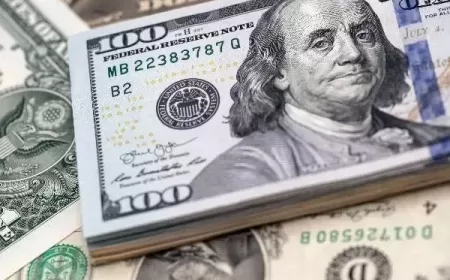Oil Prices Could Surge Above $90 as Israel-Iran Tensions Rattle Global Markets
Oil may spike past $90 or even hit $100 if Israel-Iran conflict widens. Analysts warn of disruption risk at Strait of Hormuz and global oil shock.

Global oil markets are on edge as escalating military tensions between Israel and Iran threaten to disrupt critical energy supply routes, potentially pushing crude prices well beyond $90 per barrel.
On Friday, both West Texas Intermediate (WTI) and Brent crude experienced dramatic overnight surges—up more than 13%—before settling around $74 per barrel. The sharp price swings followed reports of Israeli airstrikes targeting Iran’s nuclear infrastructure, with Tehran responding by calling the move a “declaration of war” in a letter to the United Nations.
According to analysts at Goldman Sachs, if the conflict continues to expand, it could temporarily shut down up to 1.75 million barrels per day of Iranian oil exports over the next six months. While OPEC+ nations may attempt to fill the gap, Goldman’s report suggests this would be insufficient to fully stabilize markets in the near term.
“We expect Brent crude to temporarily spike just above $90 per barrel in this scenario,” Goldman’s chief energy economist Daan Struyven wrote. “But over a longer horizon, we see prices returning to the $60 range by 2026 as supply normalizes.”
The bigger concern among analysts is the potential disruption to the Strait of Hormuz—a narrow maritime chokepoint between Iran and the Arabian Peninsula through which nearly 20% of the world’s oil supply flows. A military blockade or missile threat in this region could trigger a severe supply shock.
“In a tail-risk scenario where the Strait of Hormuz is closed or majorly disrupted, oil prices could surge beyond $100 per barrel,” Goldman’s note warned.
JPMorgan analysts have echoed similar concerns, with estimates suggesting Brent crude could hit $120 in the event of an all-out regional conflict. However, they maintain that such an extreme escalation remains unlikely.
“We still forecast a medium-term range of $60 to $65 per barrel,” said JPMorgan energy strategist Natasha Kaneva. “Sustained price spikes would increase inflationary pressure and risk reversing recent gains in global price stability.”
There’s also the growing risk of demand destruction. “The reality is, if oil prices go too high, consumers pull back,” said Fernando Valle, an energy analyst at Hedgeye Risk Management. “Spikes like these tend to be short-lived, especially if they’re driven by fear rather than supply fundamentals.”
In the geopolitical arena, the situation remains tense. Following Israeli airstrikes, Iran launched a drone attack on Israeli territory—widely seen as a warning shot for a broader military response, potentially involving precision missile strikes.
President Donald Trump addressed the crisis in a direct message posted on social media, calling on Iran to de-escalate and return to negotiations over its nuclear program. “JUST DO IT, BEFORE IT IS TOO LATE,” he wrote.
The unfolding crisis is likely to keep oil prices volatile in the days and weeks ahead, as global markets react to the pace of military developments and any diplomatic breakthroughs—or failures—that follow.
In response to the escalating conflict, energy ministries in key import-dependent nations have begun contingency planning, while traders brace for sharp fluctuations that could upend global fuel costs and disrupt supply chains across Asia and Europe.
Also Read: Oil Prices Climb Above $65 as Markets Eye US-China Trade Negotiations





























































